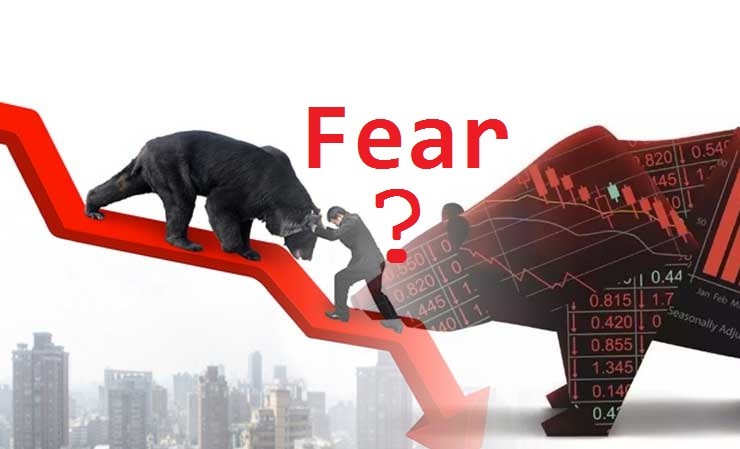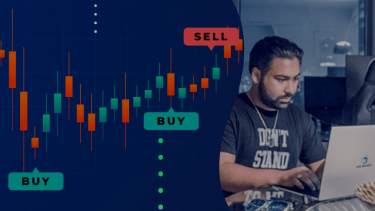Have you ever found yourself hesitating to enter a trade at precisely the right moment, only to chase the stock afterward, to your own detriment? Have you taken profits prematurely because the stock exhibited a minor wobble, only to watch from the sidelines as it continued to climb towards your initial target? If you’ve experienced these challenges, you’re not alone. Fear is a common companion in the world of trading, and it often wreaks havoc on our decision-making.
In the complex equation of trading, psychological factors account for a staggering 90% of the puzzle, with fear being a significant player. Ideally, we’d all be emotionless traders, devoid of fear and greed, guided solely by discipline. While this may be an admirable aspiration, very few can effortlessly reach this level by sheer willpower. However, while fear cannot always be eliminated entirely, there are strategies to keep it in check. Let’s explore some valuable suggestions to help you manage fear effectively.
- Start with a Well-Defined Plan
Begin with a meticulously crafted trading plan. Your plan should outline the specific strategies you intend to employ, the number of shares you’re willing to trade, and the maximum amount you’re prepared to lose on a single trade. Your trading plan encompasses numerous elements, but these are the foundational basics. A well-structured plan provides a clear roadmap for your trading journey.
- Plan Each Trade
For every trade opportunity that aligns with your plan, take the time to thoroughly map out the trade’s particulars. Determine the appropriate stop-loss and target levels. Calculate the share size in a way that a stop-out doesn’t breach your predefined maximum loss per trade. Make these decisions before entering the trade, while you’re in a calm and rational state of mind. Then, when the trade is initiated, follow your plan with unwavering discipline. It’s crucial to “execute” the trades you’ve carefully “planned.”
- Let Your Plan Work for You
Perhaps one of the most critical steps is to allow your plan to unfold naturally. Allow the trade to run its course unless there’s a substantial change in the trade’s conditions. Consider this: you’ve meticulously devised a trade while maintaining a clear and logical mindset. You’ve determined that the trade is worth risking your hard-earned money. Now, give it the opportunity to reach its intended conclusion, be it the target or the stop.
- Exceptions to the Rule
There will be times when you should consider an early exit from a trade. For example, if you’re in a long position, and the market suddenly breaches crucial support levels, it may be wise to exit. Alternatively, if you initially planned for the trade to reach the target by a specific time, and it approaches that target rapidly, you might employ a ‘bar by bar’ analysis (taught in our Professional Trading Strategies Seminar) to assess whether an early exit is warranted. However, these instances should be the exception, not the rule. The majority of the time, it’s prudent to let the trade play out without being swayed by momentary fluctuations on your Level 2 screen – the chart pattern carries far greater significance.
- Gradual Profit-Taking
If you’re still grappling with nerves and anxiety, consider this approach. Sell half of your position when the trade reaches a slightly reduced target. This practice allows you to acclimate to taking partial profits and boosts your confidence in letting the remaining portion reach the original target. Additionally, it places you in a ‘no lose’ situation with the trade, affording you the luxury of patience. Seasoned traders frequently sell incrementally on the way up, further reducing the pressure of timing the perfect exit.
- Adjust Share Size
In cases where fear still looms large, consider reducing your share size or finding trades with smaller stop levels. This ensures that the potential loss size doesn’t trigger your fear threshold. By recalibrating your share size, you can trade comfortably without succumbing to anxiety.
A meticulously crafted plan and a bolstered sense of confidence act as formidable barriers against fear’s intrusion. As you implement these strategies, you’ll begin to cultivate the self-assuredness required to stick with your trades through their entire lifecycle. If you’re just starting out, it’s advisable to begin with paper trading to build confidence in your strategies and execution system (but not for too long, perhaps 4 weeks is enough). Once you’ve gained confidence and competence on paper, transition to trading with smaller share sizes and risking only $5 per trade. Only scale up your share size when you’ve consistently achieved success at a smaller scale. Establish clear criteria for what constitutes ‘success’ before advancing. If you ever find your confidence wavering or fear resurfacing, don’t hesitate to scale back on share size until you regain your footing.
Join the Live Traders Coaching Group and Master Professional Trading Strategies
At Live Traders, we understand the importance of psychological resilience in trading. We’re here to support your journey toward confident and successful trading. Consider joining the Live Traders Coaching Group and enrolling in our Professional Trading Strategies course to further enhance your trading skills and psychological fortitude.
In the Live Traders Coaching Group, you’ll have the opportunity to connect with a community of traders who share your aspirations. Our group sessions provide a platform to learn from seasoned professionals, exchange valuable insights, and refine your trading strategies. It’s a collaborative environment where you can sharpen your skills and make well-informed decisions.
Our Professional Trading Strategies course is a comprehensive program designed to equip you with the techniques and strategies necessary for consistent profitability. You’ll learn to identify high-probability trading opportunities, manage risk effectively, and apply the principles of successful trading. Our goal is not only to impart theoretical knowledge but to guide you through real-world trading scenarios.
In conclusion, conquering fear in trading is an ongoing process, but it’s essential for your long-term success. By implementing these strategies, you’ll develop the resilience needed to navigate the challenges of trading confidently. Remember that while talent, intelligence, and education are valuable assets, they must be complemented by unwavering perseverance and a commitment to continuous improvement.





